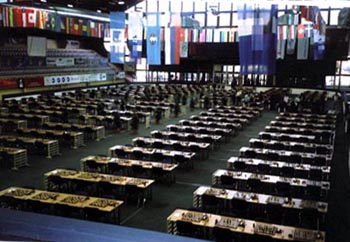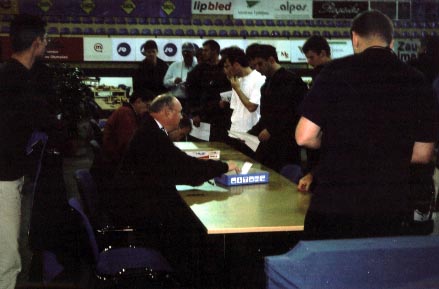|
The Procedure before the Matches
Before each round, each team had to submit its "team composition", that is, the persons who would be playing that round. The men played on four boards and the women on three. One point was awarded for a win, half a point for a draw and zero for a loss. The time control was game in 90 minutes with 30 seconds increment per move.
By the rules of the competition, players on lower boards could move up but the converse did not apply. For example, someone registered to play on board three could be elevated to play on board two but a board one player could not be moved down to play on board two. A few teams, interestingly, had their titled or highest ranked player on their lowest board!
For the first two or three rounds the matches began at 2:00 pm. This was later changed to 2:30 pm after a second meeting of all the captains, again chaired by the Chief Arbiter. Similarly, after the first few rounds each team kapetan had to submit his team's composition for the next round by 9:00 am on the playing day. The full list of persons playing would then be published by about 11:00 am, allowing only a couple of hours for preparation against confirmed or specific opponents.
|
|

